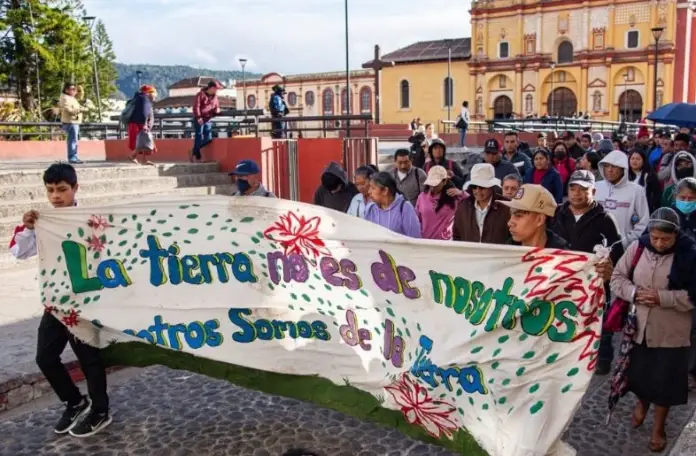Activists and environmentalists demanded that the Mexican government and the government of the state of Chiapas protect and conserve wetlands throughout the country.
They pointed out that, despite recent advances by the federal government in environmental conservation, such as the declaration of protected natural areas in 2022 and the National Water Plan promoted by President Claudia Sheinbaum, “these efforts have not been sufficient to stop the destruction of these vital ecosystems.”
“The lack of effective actions by state and federal authorities continues to put the survival of wetlands at risk. In San Cristóbal, the destruction of these ecosystems (Lakiss and María Eugenia Wetlands) persists, which provide 70% of the city’s drinking water,” Nicolás Gómez Velasco, an environmental activist, told EFE within the framework of World Wetlands Day.
February 2nd of each year is World Wetlands Day, commemorating the date on which the Convention on Wetlands was adopted, dating back to 1971, in the Iranian city of Ramsar, on the shores of the Caspian Sea.
According to information from the National Commission of Protected National Areas (Conanp), in San Cristóbal de Las Casas there are the wetlands of María Eugenia and Lakiss, catalogued as Ramsar sites, unique in the world, covering a total of 225 hectares, housing endemic species, such as the popoyote fish and migratory birds, such as the blue-winged teal and the great egret.
They also operate as a habitat for species that are in some category of risk, such as the bearded owl or the aquatic snake, which represent a unique ecological value for the world, Mexico and Chiapas.
According to experts, these ecosystems, located more than 2,000 meters above sea level, “are essential not only for local fauna, but also to prevent flooding and mitigate the effects of climate change and are essential for humanity.”
In their demonstration, the environmentalists and guardians of water and wetlands pointed out that despite the legal protection that exists at the federal level, state authorities and the federal government “have not acted sufficiently to stop excessive urbanization, invasions, irregular settlements and deforestation.”
“The government must act, because today we continue to see how wetlands classified as Ramsar sites are invaded and destroyed, even while we celebrate this day of awareness,” said Tomás Espinos, a resident of San Cristóbal de Las Casas, to EFE.
The groups denounced corruption and the lack of response by the authorities in the face of more than 100 complaints filed by the different environmental groups.
The defenders also launched an urgent call to citizens and municipal, state and federal governments to join in the protection of these vital spaces and pointed out that “the care of wetlands is not only an environmental issue, but also a matter of water security for cities.”
“In 2024, the city of San Cristóbal de Las Casas experienced one of the worst water shortage crises, and the situation could get worse if measures are not taken in time,” Mauro Pale, a Zotzil indigenous person, told EFE.
According to the Ramsar Convention (an intergovernmental treaty that serves as a framework for national action and international cooperation in favor of the conservation and rational use of these ecosystems), Mexico has 142 sites designated as wetlands of international importance, covering an area of 8.65 million hectares.

Source: latinus.us




